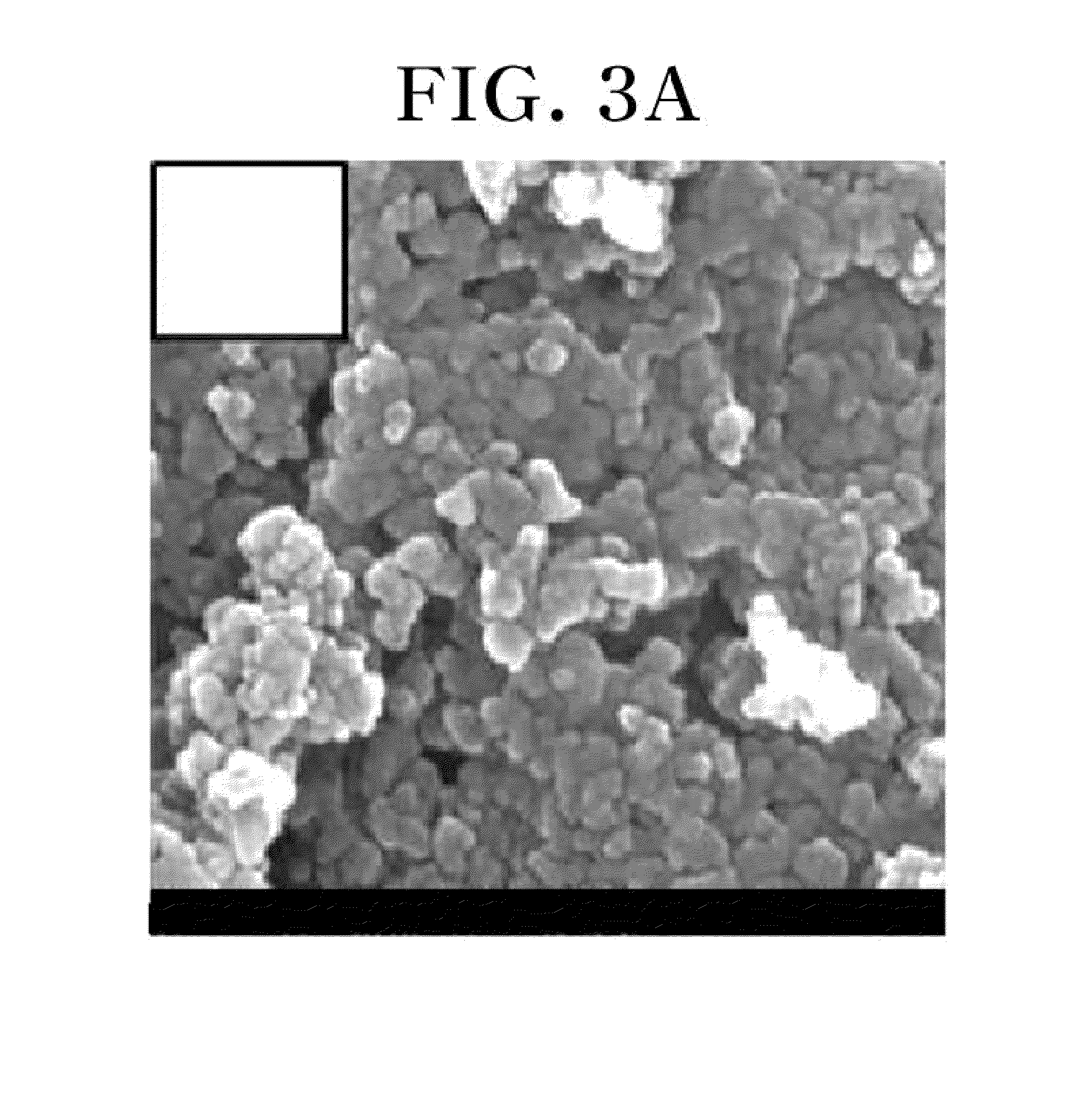Recycling method of olivine-based cathode material for lithium secondary battery, cathode material fabricated therefrom, and cathode and lithium secondary battery including the same
a lithium secondary battery and olivine-based technology, applied in the direction of nickel compounds, non-metal conductors, cell components, etc., can solve the problems of limited lithium and related resources, and achieve the effect of reducing manufacturing costs and avoiding deterioration in performan
- Summary
- Abstract
- Description
- Claims
- Application Information
AI Technical Summary
Benefits of technology
Problems solved by technology
Method used
Image
Examples
example 1
[0070]LiFePO4 cathode scraps collected during the process of fabricating a cathode for a lithium secondary battery were placed in a tubular furnace and subjected to heat treatment at a temperature of 300° C. in an air atmosphere for 3 hours to carbonize a binder, an aluminum current collector and a cathode material were separated well, and the separated cathode material was again subjected to heat treatment at a temperature of 700° C. in an air atmosphere for 6 hours, and dissolved in a hydrochloric acid solution.
[0071]In order to separate Fe+3 and Li+ of the LiFePO4 cathode material dissolved in hydrochloric acid, ammonia water was added, pH was adjusted to 5.5, and the mixture was maintained at 60° C. for 3 hours to obtain a FePO4.XH2O precipitate in an amorphous state.
[0072]The pH was titrated to 1.5 with a 5 M phosphoric acid solution while the FePO4.XH2O precipitate in an amorphous state was stirred at a rate of 300 rpm at 95° C., and then the mixture was maintained for 12 hour...
example 2
[0077]Crystalline FePO4.2H2O (metastrengite), a cathode material, and a battery were manufactured in the same manner as in Example 1, except that the acid base titration was adjusted to a pH of 2.0 during the preparation of the crystalline FePO4.2H2O (metastrengite).
[0078]Evaluation
[0079]An X-ray analysis was performed in order to confirm the phase of materials prepared in Examples 1 and 2, and the cathode materials prepared in Examples 1 and 2 were observed with a scanning electron microscope (SEM). In addition, in order to confirm the performance of cathodes fabricated in Examples 1 and 2, a capacity and cycle test was performed using a constant current method.
[0080]FIG. 2 illustrates an X-ray diffraction analysis result of FePO4.XH2O and FePO4.2H2O (metastrengite), which were synthesized in Examples 1 and 2. Referring to FIG. 2, it can be confirmed that FePO4.2H2O (metastrengite) (Example 1) synthesized in a condition of a pH of 1.5 had higher crystallinity and purity than FePO4....
PUM
| Property | Measurement | Unit |
|---|---|---|
| Temperature | aaaaa | aaaaa |
| Temperature | aaaaa | aaaaa |
| Temperature | aaaaa | aaaaa |
Abstract
Description
Claims
Application Information
 Login to View More
Login to View More - R&D
- Intellectual Property
- Life Sciences
- Materials
- Tech Scout
- Unparalleled Data Quality
- Higher Quality Content
- 60% Fewer Hallucinations
Browse by: Latest US Patents, China's latest patents, Technical Efficacy Thesaurus, Application Domain, Technology Topic, Popular Technical Reports.
© 2025 PatSnap. All rights reserved.Legal|Privacy policy|Modern Slavery Act Transparency Statement|Sitemap|About US| Contact US: help@patsnap.com



